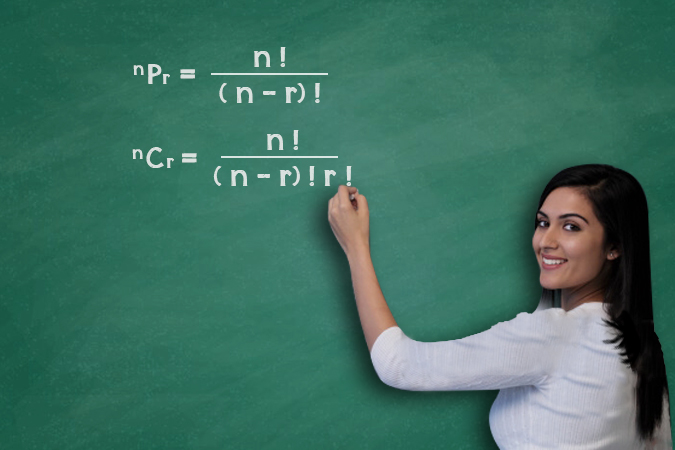Question: How many unique teams of 5 players can be selected from 9 who try out?
Coaches face this kind of problem all the time. Only a certain number of players can make it on to the starting roster, and there are any number of scenarios that need to be prepared for. What if Joey gets injured? Who would replace him? What if Nicole were moved from defense to offense? Should Tanya take her place? There are also all the possible tactical set-ups to think about.
In the above math problem, there are a lot of different player combinations to consider. Fortunately, counting them can be done very quickly and easily.
Permutations or Combinations?
The first step in a question like this is to determine which it’s asking for—permutations or combinations. There is a clear difference between the two.
- Permutations are different orders of individual elements selected from a pool that is usually larger. Order matters here, so just moving the same elements around creates a new permutation.
- Combinations, on the other hand, are different groups of individual elements selected from a pool that is usually larger. Order is irrelevant here, so simply rearranging the same elements doesn’t make a difference.
For example, say the TV show, The X-Factor, has three singers competing – Jack, Joe and Mary – with only two singing on a given day. The running order could see Jack sing first followed by Joe, or it could see Joe followed by Mary, or may be Mary will sing first. There are six different permutations that the running order could take:
- Jack then Mary
- Jack then Joe
- Mary then Jack
- Mary then Joe
- Joe then Jack
- Joe then Mary
Combinations ignore order, so there are only three different possible combinations of singers for the day:
- Jack and Joe
- Jack and Mary
- Joe and Mary
Returning to our math problem, it asks how many teams of 5 players can be selected from 9 players who try out, without any particular order that the players are put into, so we are looking for the number of combinations, not permutations.
The Combination Formula
Now that we know we’re looking for the number of combinations, all we need to do is plug the numbers of our problem into a handy-dandy combination formula and watch the magic. Let C be the number of combinations, n the number of elements in the larger pool, and r the number of elements selected. The number of possible combinations is given by
n!
nCr = ____________
r! (n – r)!
where ! means “factorial,” and works like this: 5! = 5x4x3x2x1, 4! = 4x3x2x1, and so forth. We’re told that the total number of students on the team (n) is 9 and that the number selected (r) is 5, so plugging in, we have
9! 9! 9 x 8 x 7 x 6 x 5!
9C5 = ____________= ___________= __________________
5! (9 – 5)! 5! 4! 5! (4x3x2x1)
Cancelling, we get
2
9 x 8 x 7 x 6 x 5! 9 x 2 x 7
= ___________________ = ________________ = 9 x 2 x 7 = 126 combinations
5! (4 x 3 x 2) 1
That’s it!
Want to learn more about the GRE? Check out our free GRE events.
https://thebesttestprep.com/free-gre-informational-meeting/
